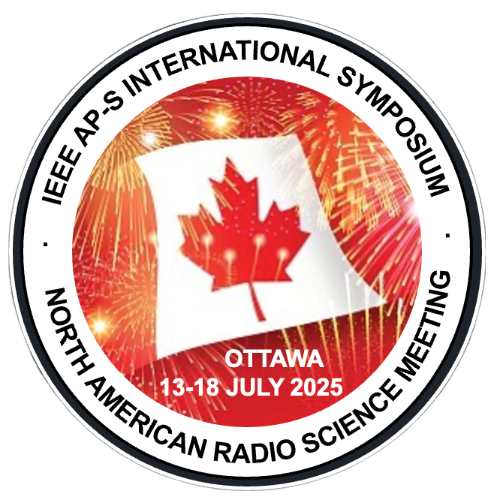Short Courses, Tutorials and Workshops
Presented by: Thomas E. Roth, Dong-Yeop Na, Weng C. Chew, Paolo Rocca, Zhen Peng, Gabriele Gradoni
Location: Rogers Centre: Room 209
There is currently an explosive advancement in quantum information processing technology underway that has the potential to revolutionize society through the use of quantum computers, quantum communication systems, and quantum sensors that can outperform the best classical technologies. Antenna and propagation technologies are no exception, with many longstanding challenges potentially becoming addressable using these new quantum technologies. Further, because these emerging devices significantly involve electromagnetic effects there is an important role that classically-trained electromagnetic engineers can play in making these quantum technologies a reality. This course looks at both sides of this emerging technology space with the assumption that the students have no prior background in quantum physics. Specifically, the course introduces different paradigms of quantum computation and discusses how each approach can be used to solve electromagnetic analysis and optimization problems. Sample applications include the analysis and design of antenna arrays and the beamforming optimization of large reconfigurable intelligent surfaces. A hands-on training is also included to begin learning how to use quantum computers for these applications. We also discuss the fundamentals of quantum theory, with application toward building a description of the quantization of electromagnetic fields. These fundamentals are then extended to look at numerical algorithms for modeling various quantum electromagnetic effects in dispersive inhomogeneous media with applications for quantum communications and quantum sensors. The interactions of electromagnetic fields with superconducting circuit qubits are also covered to provide an understanding of the underlying operations occurring at the hardware level in one of the leading quantum computing architectures.Presented by: Vincent Lee
Location: Rogers Centre: Room 204
TMYTEK is pioneering advancements in antenna technology for 5G/B5G and SATCOM, focusing on the development of Phased Array Antennas (PAA) solutions. Our approach includes revolutionizing mmWave RF front-end systems and introducing a comprehensive beamforming development kit, which significantly enhances the functionality and performance of our antenna offerings. A pivotal element of our research is the Dynamic Reconfigurable Intelligent Surfaces (RIS) technology, which represents a paradigm shift in wireless communication. By intelligently manipulating the wireless environment, the reflector and Dynamic RIS enhance signal quality and coverage, mitigating challenges such as interference and multipath propagation. Furthermore, our FR2 NextGen Wireless Education Kit provides an invaluable resource for hands-on learning and experimentation with antenna systems for attendants, facilitating rapid prototyping and algorithm testing. This integrated approach positions TMYTEK's antenna solutions at the forefront of next-generation wireless communication, enabling the development of adaptable platforms for a wide array of applications in the evolving landscape of 5G and 6G technologies.Presented by: Vikass Monebhurrun, Lars Foged, Vince Rodriguez
Location: Rogers Centre: Room 206
Everybody is familiar with the ubiquitous WiFi technology which is based on the popular IEEE 802.11™ series of wireless connectivity standards. Its importance in our daily life is universally recognized. About a thousand standards have already been developed —and about the same number is currently under development— by the IEEE Standards Association (SA), typically sponsored by an IEEE Technical Society. The IEEE Antennas and Propagation Society (AP-S) also sponsors the development and maintenance of some standards such as nomenclature, definitions, recommended measurement and simulation practices.
How can these IEEE AP-S standards help you? The speakers will cover some of the current measurement and computational standards being developed by the IEEE Antennas and Propagation Standards Committee (APS/SC). They will present and discuss some cases where the standards can help you decide how to measure your antenna, what are the sources of uncertainty on the measurement, what is the best type of approach to measure a given antenna, etc. to exemplify the application of IEEE Std 149-2021. The attendees are also encouraged to bring forward their measurement problems for the expert presenters to recommend solutions that are suggested in the standard documents.
Within the framework of the computational standard (IEEE P2816), the comparison results of the recent international measurement and simulation campaigns of benchmark antennas will also be presented and discussed.
Ideas for other potential standards that would be useful to the membership of the society are welcome.
Participants of the workshop will be enrolled in a draw and 3 lucky winners will receive a copy of the recently published IEEE Std 149-2021: IEEE Recommended Practice on Antenna Measurements (US $164 Value).
Presented by: Jordan Budhu
Location: Rogers Centre: Room 211
This course will provide a solid foundation of numerical modelling of metasurfaces based on integral equations. Numerical design, analysis, and synthesis techniques for metasurfaces will be built up starting from Maxwell’s equations. Both 2D and 3D algorithms will be presented. Rapid optimization schemes based on the Adjoint variable technique will also be presented. The student will leave with the ability to write their own integral equation based codes for metasurface design.Presented by: Martin Vogel, C.J. Reddy
Location: Rogers Centre: Room 212
In an ever-more connected world, a good understanding of RF propagation is essential to design properly functioning modern communication networks that enable high-speed data transfer amidst interference from other networks, data links, radio and radar systems. Environments such as offices, campuses, industrial sites, cities and rural areas, are always large-scale and complicated and require computationally efficient and accurate propagation analysis. In this tutorial, we will teach the physics behind many simulation methods for RF propagation, from empirical models, via ray-tracing and shooting and bouncing rays, to the Parabolic Equation Method. The tutorial will also provide insight into the trade-offs of the many simulation methods that exist, and teach which to choose depending on the application at hand. Many practical examples will be presented and demonstrated.Presented by: Maokun LI, Marco Salucci
Location: Rogers Centre: Room 213
In recent years, research in artificial intelligence techniques comprising both optimization and machine learning methodologies has attracted much attention. In particular, with the help of big data technology, massively parallel computing, and fast optimization algorithms, deep learning has greatly improved the performance of many problems in speech and image research. In this short tutorial, the presenters will share some of their learnings in artificial intelligence and deep learning techniques and discuss the potential and feasibility of applying them in computational electromagnetics. After discussing the fundamentals of such paradigms, the presenters will explore the characteristics, feasibility, and challenges of these methods in computational electromagnetics through examples of solving electromagnetic forward modeling and inverse problems.Presented by: Yahya Rahmat-Samii, Fan Yang
Location: Rogers Centre: Room 215
From frequency selective surfaces (FSS) to electromagnetic band-gap (EBG) grounds, from impedance boundaries to metasurfaces, novel electromagnetic surfaces keep on emerging. Many intriguing phenomena occur on these surfaces, and novel devices and applications have been proposed accordingly, which have created an exciting paradigm in electromagnetics, the so-called “Surface Electromagnetics”. This short course will review the development of various electromagnetic surfaces, as well as the state-of-the-art concepts and designs. Detailed presentations will be provided on the unique electromagnetic features of EBG ground planes and advanced metasurfaces. Furthermore, a wealth of antenna examples will be presented to illustrate promising applications of the surface electromagnetics in antenna engineering. The course covers representative materials from recent books by the lecturers, “Surface Electromagnetics: With Applications in Antenna, Microwave and Optical Engineering” (Cambridge University Press 2019) and “Electromagnetic Band Gap Structures in Antenna Engineering” (Cambridge University Press, 2009).





